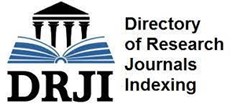Subject Area
Degenerative, Cervical spine
Document Type
Clinical Study
Abstract
Background Data: Degenerative cervical myelopathy is a complex neurologic disorder that usually develops insidiously, although abrupt deterioration in function can occur. The natural history of cervical myelopathy is highly variable,with some patients having progressive disability, whereas others have a mild course. The treatment of cervical myelopathy may be conservative or surgical, depending on the severity of symptoms at initial examination.Purpose: The aim of this work is to assess the clinical improvement as well as the bony fusion in patients with cervical myelopathy treated by multi-level ACDF using stand-alone PEEK cages.Study design: clinical_studyPatients and Methods: The material of this study consisted of 20 patients with cervical myelopathy. The mean age was 52 years. 55% of the patients were males. The patients were assessed pre-operatively and post-operatively using the European Myelopathy Scoring (EMS). Fusion was assessed by X-ray at theend of follow up. Results: The mean operative time per level was 70 minutes. The mean blood loss was 150 ml. There were no intraoperative complications. The mean preoperative EMS was 8 points (6-11). At the end of follow up, the mean EMS improved to 14 points (11-18).The difference between the pre-operative and end follow up EMS was statistically significant (P < 0.001). 2 levels (3.3%) out of 60 showed x-ray evidence of pseudoarthrosis. Conclusions: Multi-level ACDF using stand-alone PEEK cages filled with local bone graft has many advantages in treating patients with degenerative cervical myelopathy. These include; minimal intraoperative and postoperative complications (including complications of anterior plating), avoidance of donor site morbidity, satisfactory clinical outcomes, and high fusion rate. (2014ESJ061)
Keywords
Cervical myelopathy, stand-alone cages, PEEK, ACDF
How to Cite This Article
Allam, Yasser and Al-Feki, Tarek
(2014)
"Multi-level ACDF using standalone PEEK cages for the treatment of degenerative cervical myelopathy: Clinical and radiological assessment.,"
Advanced Spine Journal: Vol. 10
:
Iss.
1
, Article 2.
Available at: https://doi.org/10.21608/esj.2014.3872























